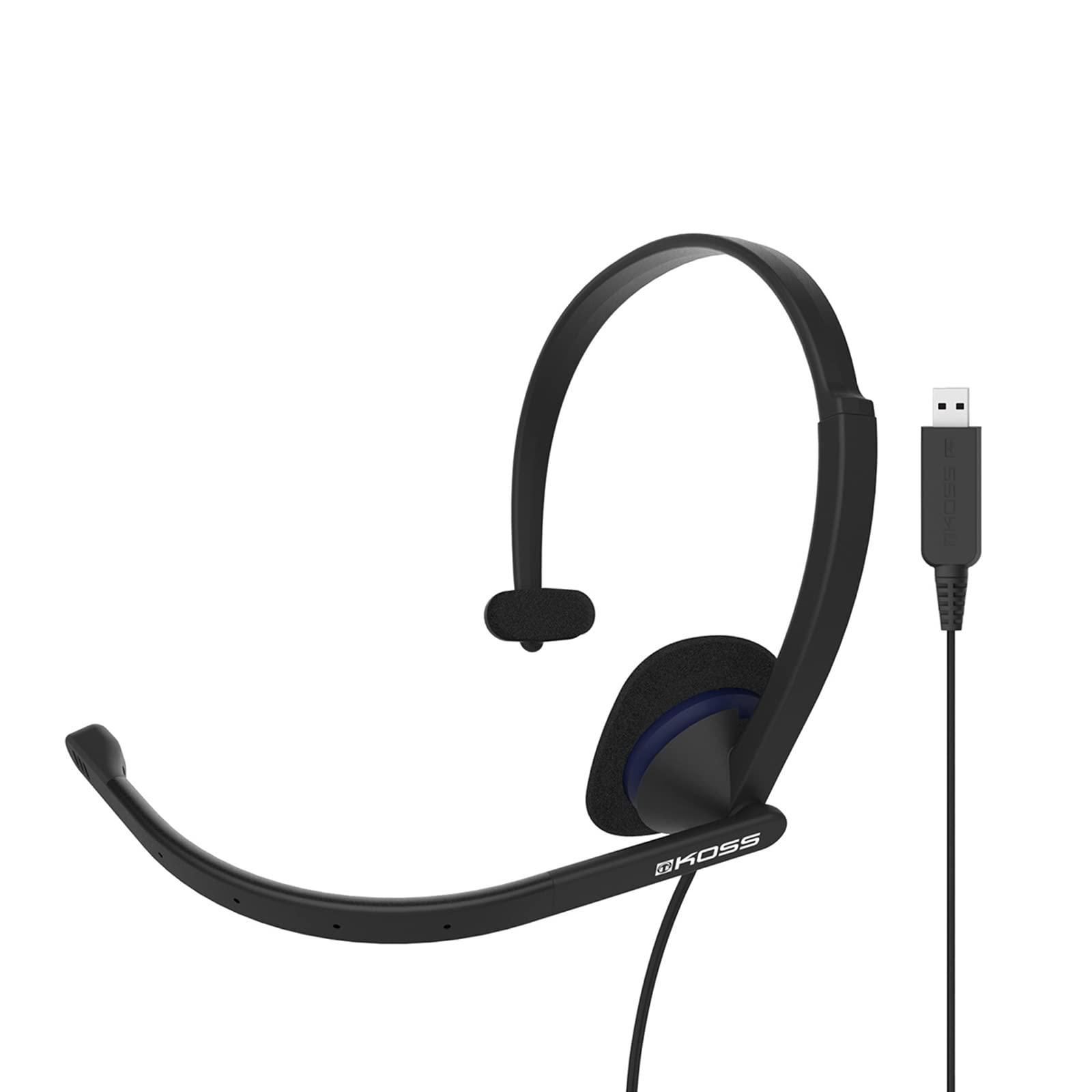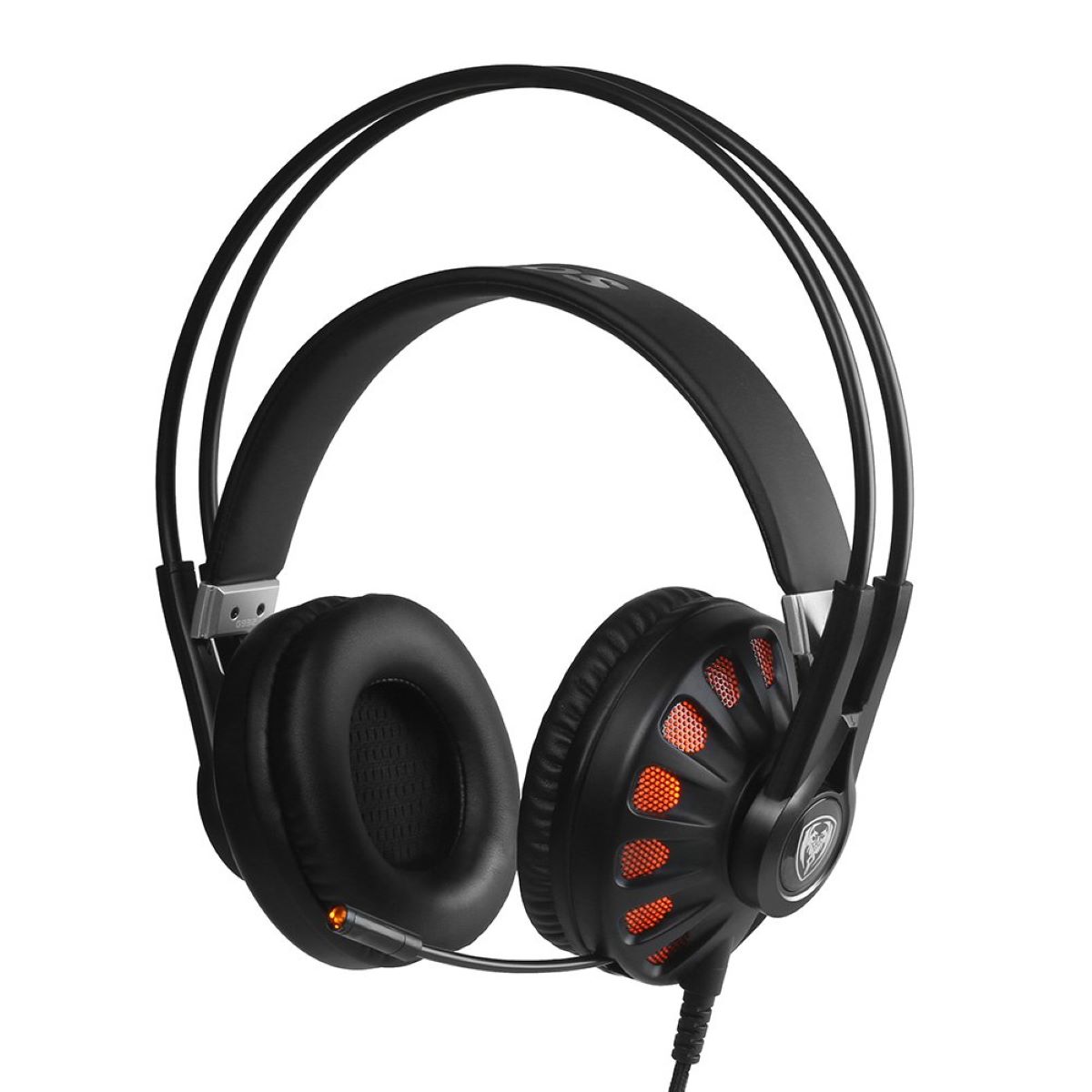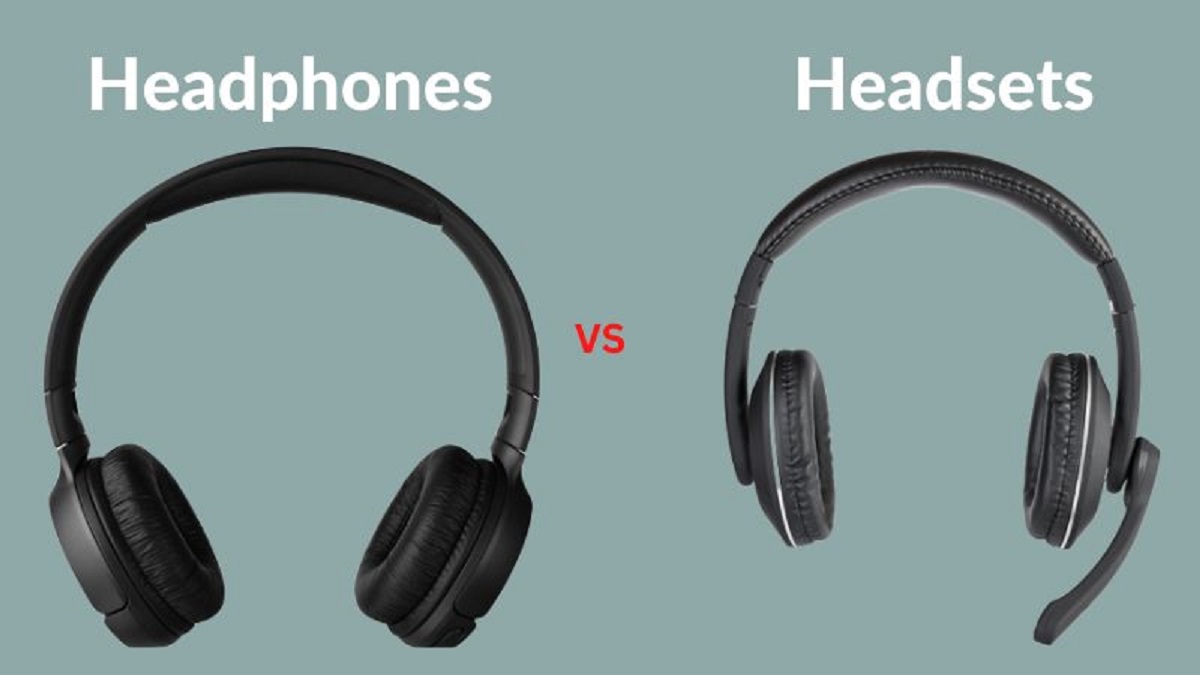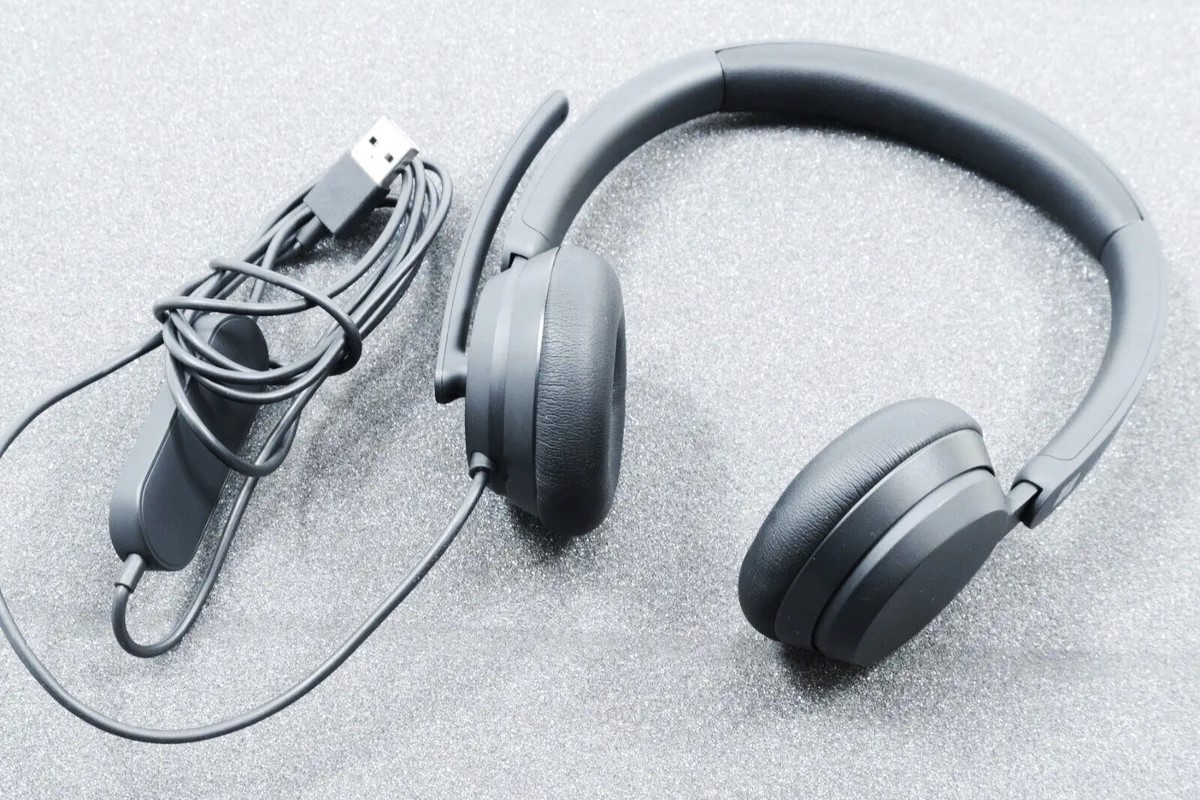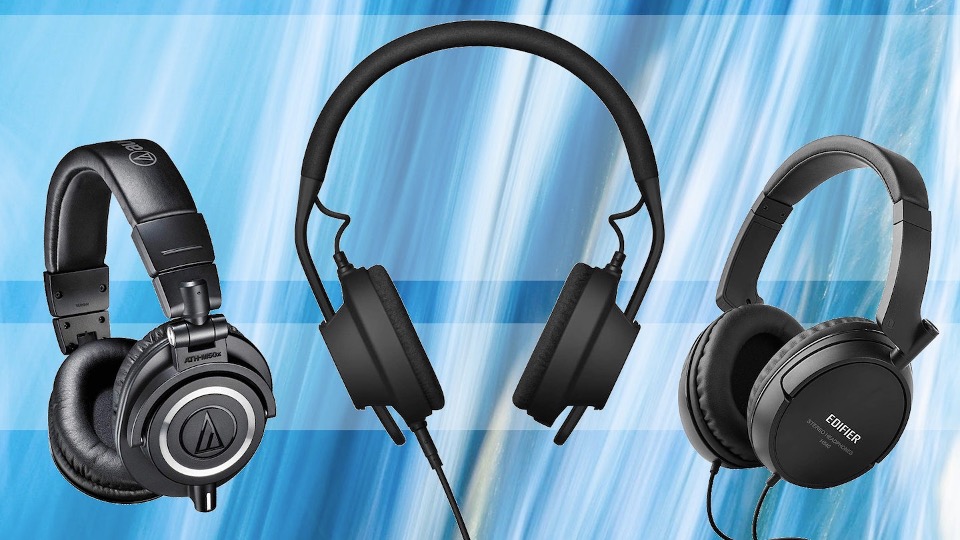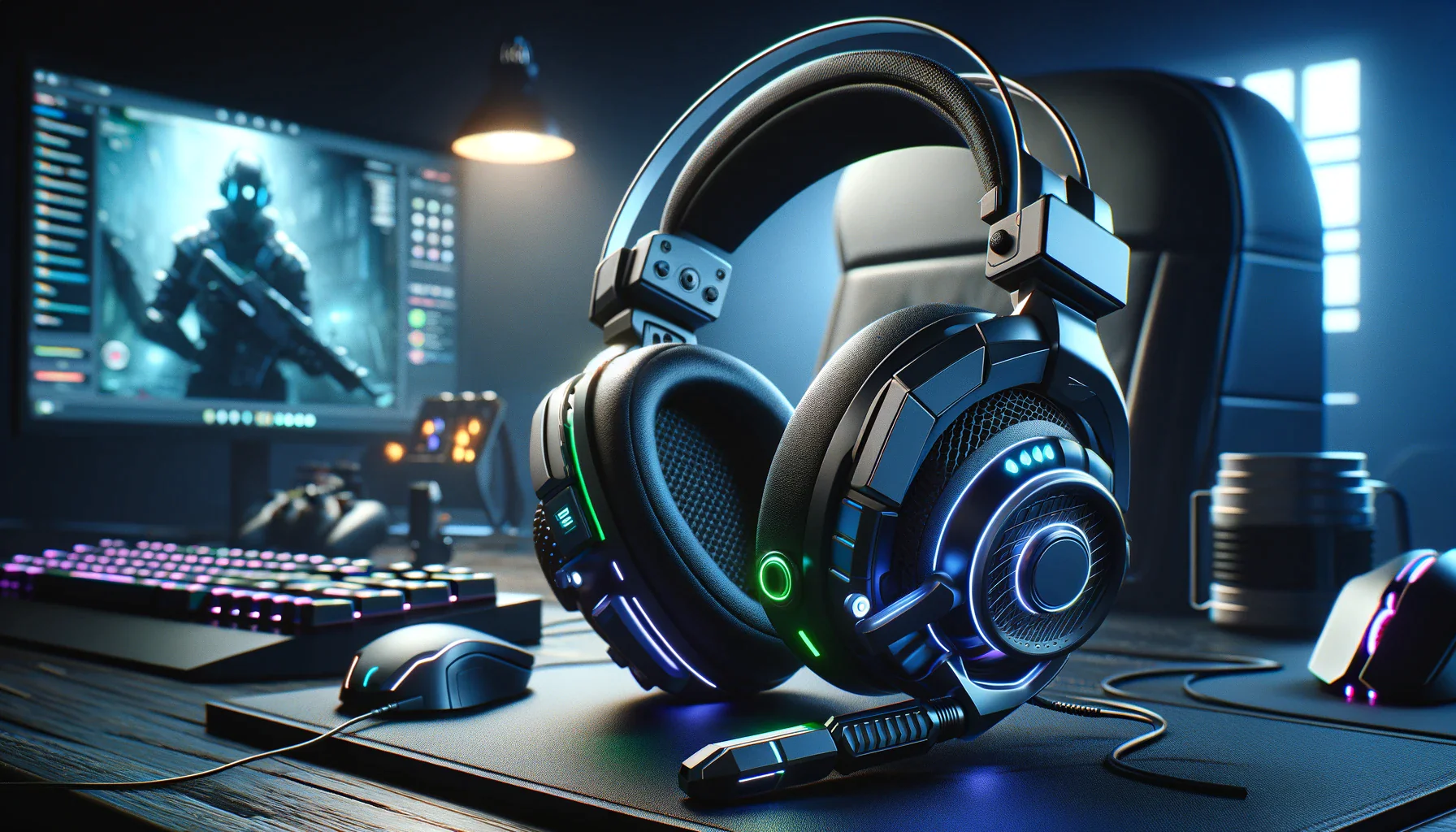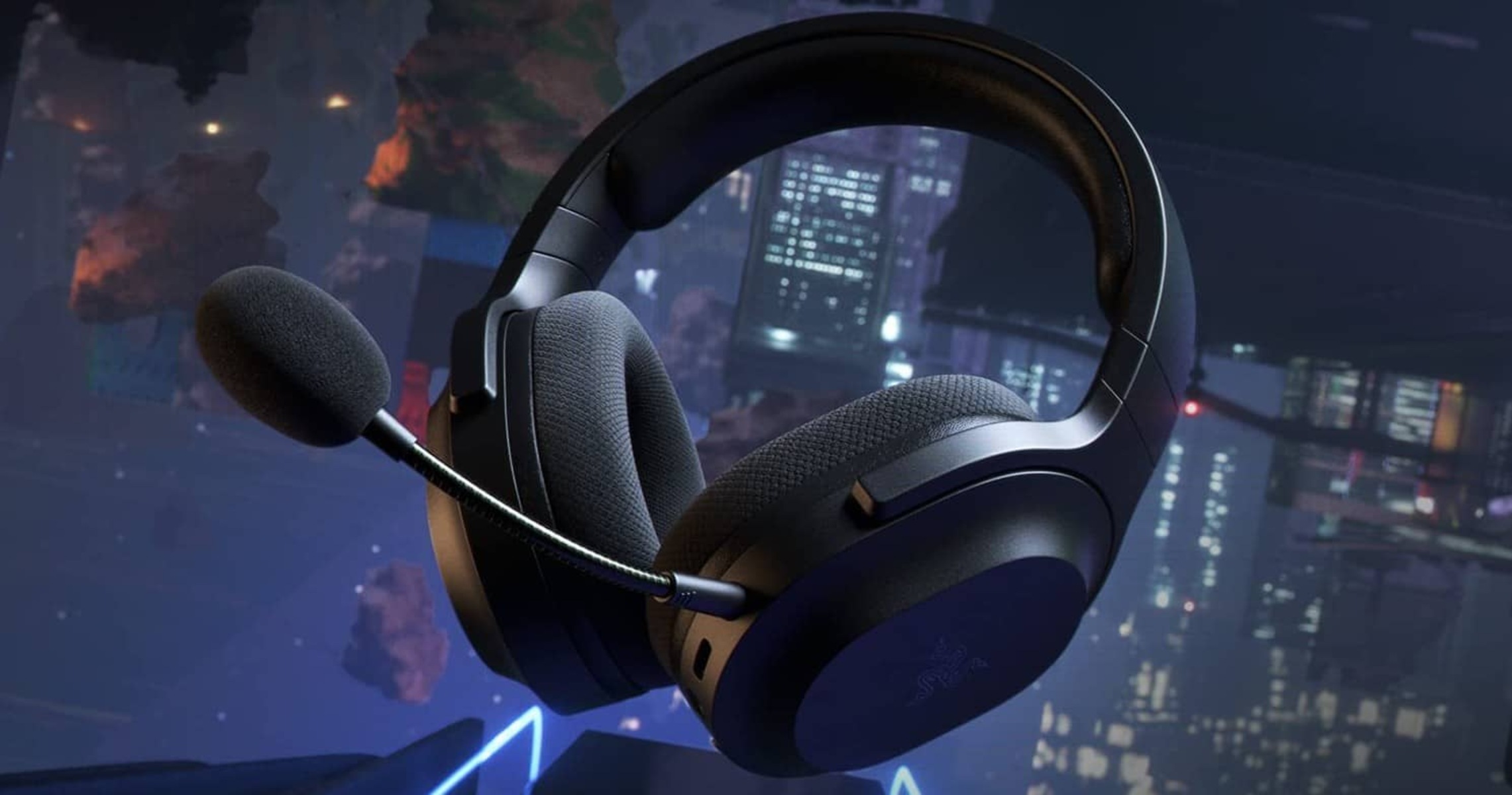Introduction
In today's fast-paced digital world, technological advancements continue to reshape the way we interact with our devices. From the way we communicate to how we immerse ourselves in entertainment, the demand for high-quality audio solutions has never been greater. Among the myriad of audio peripherals available, USB headsets have emerged as a popular choice for users seeking convenience and superior sound quality.
As we delve into the realm of USB headsets, it's crucial to understand the fundamental aspects that make them an integral part of modern computing and communication. Whether you're a professional seeking a reliable tool for virtual meetings or a gaming enthusiast craving an immersive audio experience, the USB headset offers a compelling solution for a wide range of users.
By unraveling the intricacies of USB headsets, we can gain a deeper appreciation for their functionality, advantages, and potential limitations. This exploration will not only shed light on the technical aspects but also provide insights into the user experience, compatibility, and the evolving role of USB headsets in our daily lives.
Join us as we embark on a journey to demystify USB headsets, uncovering the nuances that make them indispensable in today's audio landscape. Let's delve into the inner workings of these innovative devices and explore the myriad ways in which they enhance our digital experiences.
What is a USB Headset?
A USB headset is a combination of headphones and a microphone that connects to a computer or compatible device via a USB port. Unlike traditional analog headsets, which rely on separate audio and microphone jacks, USB headsets integrate both audio output and input into a single, convenient connection. This integration streamlines the setup process, eliminating the need for multiple cables and audio ports, and simplifying the user experience.
USB headsets are equipped with built-in sound cards and digital signal processing capabilities, allowing them to convert digital audio signals and process microphone input directly through the USB connection. This digital processing enhances audio quality and minimizes interference, resulting in clear, crisp sound output and accurate voice capture.
The design of USB headsets varies, ranging from sleek, lightweight models suitable for professional use to robust, feature-rich headsets tailored for gaming and multimedia applications. Many USB headsets are ergonomically designed for extended wear, featuring adjustable headbands, cushioned ear cups, and flexible microphones to ensure comfort and functionality during prolonged use.
One of the key distinguishing features of USB headsets is their plug-and-play functionality. When connected to a compatible device, such as a computer or gaming console, USB headsets are automatically recognized and configured, eliminating the need for manual driver installation or complex setup procedures. This seamless integration enables users to quickly and easily switch between audio output sources and seamlessly engage in voice communication without intricate configuration steps.
In addition to their primary function as communication and audio playback devices, USB headsets often incorporate intuitive controls, such as volume adjustments, microphone muting, and in-line call management buttons. These integrated controls provide users with convenient access to essential functions, enhancing the overall user experience and productivity.
Overall, a USB headset represents a versatile and user-friendly audio solution that caters to a diverse range of applications, including teleconferencing, online gaming, multimedia content consumption, and voice recognition. Its seamless connectivity, digital audio processing capabilities, and ergonomic design make it a compelling choice for individuals seeking a reliable and immersive audio experience.
How Do USB Headsets Work?
USB headsets leverage the Universal Serial Bus (USB) interface to establish a seamless connection with compatible devices, enabling users to enjoy high-quality audio playback and crystal-clear voice communication. The functionality of USB headsets hinges on several key components and processes, each contributing to their efficient operation and superior audio performance.
Upon connecting a USB headset to a compatible device, such as a computer or gaming console, the USB port serves as the conduit for both audio output and microphone input. Unlike traditional analog headsets that rely on separate audio and microphone jacks, USB headsets integrate these functions into a single, unified interface, simplifying the setup process and enhancing user convenience.
The built-in sound card within the USB headset plays a pivotal role in processing digital audio signals, ensuring that the audio output is rendered with precision and clarity. This digital signal processing capability enables USB headsets to deliver immersive soundscapes, allowing users to experience rich, high-fidelity audio across various applications, from music and movies to gaming and virtual meetings.
In tandem with audio playback, the integrated microphone of the USB headset captures vocal input, leveraging digital processing to transmit clear and accurate voice signals to the connected device. This capability is particularly vital for activities such as online voice calls, virtual meetings, and voice commands, where reliable voice capture is essential for effective communication and interaction.
Furthermore, the plug-and-play nature of USB headsets streamlines the user experience by eliminating the need for manual driver installation or complex configuration steps. Once connected, the USB headset is automatically recognized by the device, allowing users to seamlessly transition into immersive audio experiences and engage in voice communication without the burden of intricate setup procedures.
In essence, the seamless integration of audio playback, microphone input, digital signal processing, and plug-and-play functionality defines the operational framework of USB headsets. By harnessing the power of digital audio processing and the convenience of USB connectivity, these headsets empower users to immerse themselves in high-quality audio experiences while facilitating clear and effective voice communication across a myriad of applications.
Advantages of USB Headsets
USB headsets offer a multitude of advantages that cater to the diverse needs of users across various domains, from professional settings to leisure activities. These advantages underscore the compelling value proposition of USB headsets and contribute to their widespread adoption in the modern digital landscape.
-
Plug-and-Play Convenience: USB headsets are renowned for their seamless integration with compatible devices, thanks to their plug-and-play functionality. Upon connection, these headsets are automatically recognized and configured, eliminating the need for manual driver installation or complex setup procedures. This inherent convenience allows users to swiftly transition into immersive audio experiences and engage in voice communication without the burden of intricate configuration steps.
-
Digital Audio Processing: Equipped with built-in sound cards and digital signal processing capabilities, USB headsets excel in delivering high-quality audio output. By harnessing digital processing, these headsets can render rich, immersive soundscapes with precision and clarity. Whether users are indulging in music, movies, or gaming, the digital audio processing of USB headsets ensures a captivating audio experience that surpasses analog alternatives.
-
Clear Voice Capture: The integrated microphones of USB headsets leverage digital processing to capture vocal input with remarkable clarity. This capability is invaluable for activities such as teleconferencing, online voice calls, and voice commands, where effective voice communication is paramount. The clear and accurate voice capture offered by USB headsets enhances the overall communication experience, facilitating seamless interactions in professional and leisure contexts.
-
Versatile Applications: USB headsets cater to a diverse range of applications, making them a versatile audio solution. Whether it's engaging in virtual meetings, participating in online gaming, consuming multimedia content, or utilizing voice recognition software, USB headsets adapt seamlessly to varied usage scenarios. This versatility positions USB headsets as indispensable tools for individuals seeking reliable and immersive audio experiences across different domains.
-
Ergonomic Design: Many USB headsets feature ergonomic designs, incorporating adjustable headbands, cushioned ear cups, and flexible microphones for enhanced comfort during prolonged use. This ergonomic focus ensures that users can enjoy extended audio sessions without discomfort, making USB headsets well-suited for professional tasks, gaming marathons, or leisurely entertainment consumption.
-
Unified Connectivity: The integration of audio output and microphone input into a single USB connection streamlines the setup process and eliminates the need for multiple cables and audio ports. This unified connectivity simplifies the user experience, making USB headsets an attractive choice for individuals seeking a hassle-free audio solution that seamlessly integrates with their devices.
In essence, the advantages of USB headsets encompass convenience, audio quality, communication clarity, versatility, comfort, and streamlined connectivity. These attributes collectively position USB headsets as indispensable tools for individuals seeking reliable, immersive, and user-friendly audio experiences across a myriad of applications.
Disadvantages of USB Headsets
While USB headsets offer a plethora of benefits, it's important to acknowledge their potential limitations to provide a balanced understanding of their capabilities. Despite their widespread popularity, USB headsets are not without drawbacks, and it's essential for users to be aware of these aspects when considering the adoption of these audio peripherals.
One notable disadvantage of USB headsets is their dependency on the availability of USB ports. In scenarios where devices have limited or occupied USB ports, connecting a USB headset may pose a challenge, especially when other USB-dependent peripherals are in use. This limitation can be particularly relevant for users of laptops or compact computing devices with a restricted number of USB ports, necessitating careful consideration of port availability and potential conflicts with other connected devices.
Another consideration is the potential compatibility issues that may arise when using USB headsets with certain devices. While USB connectivity is widely supported across various platforms, there may be instances where specific devices or operating systems exhibit limited compatibility with certain USB headsets. This can lead to inconvenience for users who rely on seamless connectivity across multiple devices, prompting the need for thorough compatibility checks before investing in a USB headset.
Furthermore, the reliance on digital processing and integrated sound cards in USB headsets may introduce constraints in terms of audio customization and advanced audio configurations. Unlike analog headsets that can be paired with external audio equipment and customized using specialized audio interfaces, USB headsets may offer limited flexibility in adjusting audio parameters to suit individual preferences or advanced audio production requirements.
In addition, some users may find the cable dependency of USB headsets to be a potential drawback, especially in environments where cable management and freedom of movement are crucial. While wireless alternatives exist, traditional USB headsets necessitate a physical connection to the device, which can result in cable clutter and constraints on mobility, particularly in dynamic usage scenarios such as gaming or physical activities.
Lastly, in certain professional audio production or studio environments, the latency introduced by USB connectivity may pose a concern for users who require real-time audio monitoring and precise synchronization. While USB headsets generally offer low latency suitable for standard usage, specialized audio applications may demand ultra-low latency performance that traditional analog solutions can provide.
In summary, the limitations of USB headsets encompass constraints related to USB port availability, compatibility considerations, audio customization, cable dependency, and latency for specialized applications. While these disadvantages warrant attention, they are balanced by the numerous advantages that USB headsets offer, making them a compelling choice for a wide range of users across diverse audio-related activities.
Compatibility with Devices
The compatibility of USB headsets with a diverse array of devices is a pivotal aspect that influences their usability and appeal to users across different technological environments. USB headsets, renowned for their plug-and-play convenience, are designed to seamlessly integrate with a wide spectrum of devices, ranging from traditional desktop computers to modern gaming consoles and mobile platforms.
One of the primary advantages of USB headsets lies in their broad compatibility with various operating systems, including Windows, macOS, and Linux. This cross-platform support ensures that users can effortlessly connect their USB headsets to computers running different operating systems, facilitating a consistent audio experience across diverse computing environments. Whether it's a professional utilizing a USB headset for virtual meetings on a Windows-based workstation or a content creator editing audio on a macOS-powered device, the compatibility of USB headsets transcends platform-specific barriers, offering a unified audio solution.
In addition to desktop and laptop computers, USB headsets extend their compatibility to gaming consoles, such as PlayStation and Xbox, enriching the gaming experience with immersive audio and seamless voice communication. The plug-and-play nature of USB headsets enables gamers to effortlessly connect these peripherals to their consoles, immersing themselves in captivating soundscapes and coordinating strategies with teammates using the integrated microphones.
Moreover, the compatibility of USB headsets with mobile devices further amplifies their utility, catering to users who seek enhanced audio experiences on smartphones and tablets. Whether it's enjoying multimedia content, engaging in voice calls, or utilizing voice recognition applications, the versatility of USB headsets extends to the mobile realm, empowering users to leverage the convenience and audio quality of these peripherals on the go.
Furthermore, the compatibility of USB headsets with virtual reality (VR) platforms underscores their relevance in immersive gaming and interactive experiences. By seamlessly integrating with VR headsets and gaming systems, USB headsets contribute to a holistic audio-visual experience, enhancing spatial audio perception and communication within virtual environments.
The broad compatibility of USB headsets with an extensive range of devices exemplifies their adaptability and versatility, making them indispensable tools for individuals across professional, gaming, entertainment, and mobile usage scenarios. Whether it's seamless integration with desktop workstations, immersive gaming on consoles, enhanced audio experiences on mobile devices, or immersive interactions in virtual reality, USB headsets transcend device-specific limitations, delivering consistent audio performance and communication capabilities across diverse technological ecosystems.
Conclusion
In conclusion, the evolution of USB headsets has significantly reshaped the audio landscape, offering users a seamless blend of convenience, audio quality, and versatile compatibility. These audio peripherals have transcended traditional limitations, emerging as indispensable tools for professionals, gamers, content consumers, and mobile users alike. The plug-and-play convenience, coupled with digital audio processing capabilities, positions USB headsets as reliable solutions for immersive audio experiences and effective voice communication across diverse platforms and devices.
The inherent advantages of USB headsets, including their plug-and-play convenience, digital audio processing, clear voice capture, versatile applications, ergonomic design, and unified connectivity, underscore their compelling value proposition. Whether it's the streamlined setup process, the immersive soundscapes, or the reliable voice capture, USB headsets cater to the multifaceted audio needs of modern users, seamlessly integrating into various technological ecosystems to deliver consistent performance and user satisfaction.
While USB headsets exhibit certain limitations, such as dependency on USB ports, potential compatibility issues, and constraints related to audio customization, these drawbacks are mitigated by their numerous strengths. The broad compatibility of USB headsets with desktop computers, gaming consoles, mobile devices, and virtual reality platforms reinforces their adaptability and relevance in diverse usage scenarios, ensuring that users can rely on these peripherals for a unified audio experience across their technological repertoire.
As technology continues to advance, the role of USB headsets is poised to expand further, driven by the increasing demand for seamless audio solutions that cater to the dynamic needs of modern users. Whether it's the pursuit of professional productivity, immersive gaming experiences, or on-the-go audio enjoyment, USB headsets stand as versatile companions, enriching the audio landscape with their user-friendly design and exceptional performance.
In essence, USB headsets have transcended the conventional boundaries of audio peripherals, embodying a harmonious fusion of innovation, convenience, and audio excellence. With their unwavering compatibility, immersive audio capabilities, and user-centric design, USB headsets have cemented their status as indispensable companions in the digital age, empowering users to embark on captivating audio journeys across a myriad of devices and applications.







